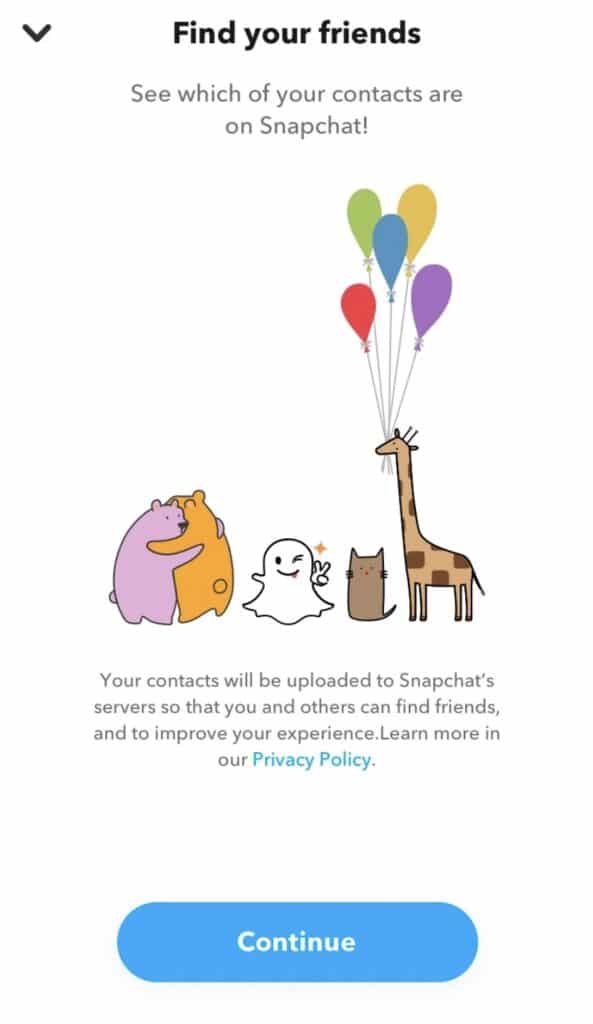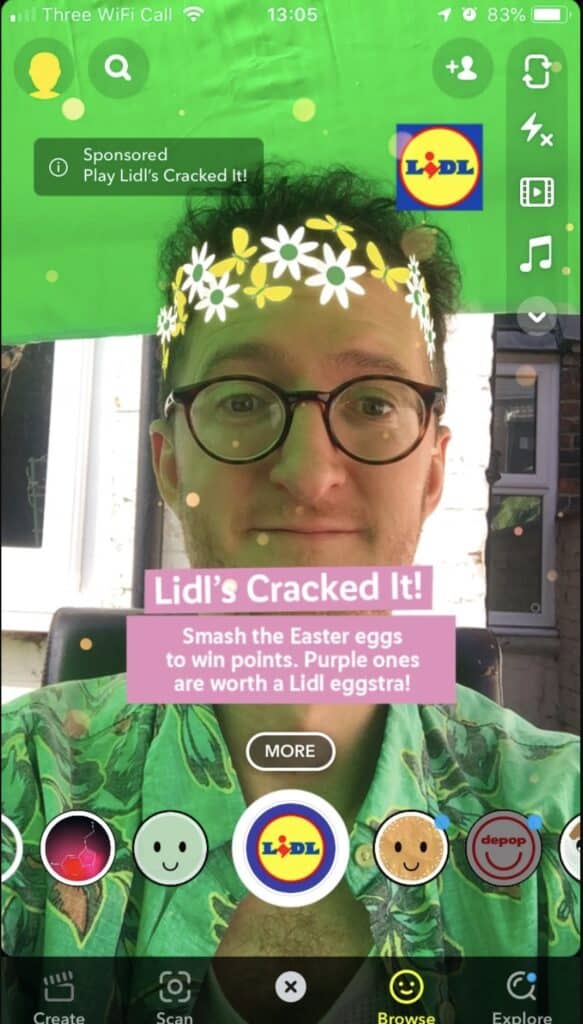Do you remember when Snapchat was super popular? Like, Facebook tried to buy it for $3 billion but got rejected? Yeah, those were the days.
But now, things have calmed down a bit for Snapchat.
So, does that mean it’s useless for businesses trying to make money through affiliates?
Not really.
Snapchat still has some chances for affiliate marketing campaigns. Its style of short-lived snaps and stories is different from other social media, which can actually be good for making money if you know how to work it.
Table of Contents
Why Choose Snapchat?
Snapchat isn’t the trendiest app nowadays, but it still has a lot of users. Though its growth has slowed, it’s still going up, expected to continue until at least the end of 2024.
Unlike big social networks like Facebook, Snapchat’s users are mostly in a few countries, especially the US, where almost a third of its users are.
Snapchat doesn’t have the biggest audience among social networks, but that doesn’t matter much. What matters is who uses it, and it attracts younger users, mostly aged 13 to 34 in the US. Since these age groups have a lot of spending power, it’s a valuable base for marketers.
Snapchat users are really active. Every day, 265 million people use it, opening the app about 30 times. They keep coming back because they actually enjoy using Snapchat, unlike some other platforms where people feel stressed or overwhelmed.
Snapchat users are also more likely to make impulse purchases compared to others, which makes it a great place for affiliate marketing.
What is Snapchat Affiliate Marketing?
Snapchat affiliate marketing is about earning commissions by promoting products through referral links.
Unlike other social media platforms, Snapchat allows direct affiliate links in posts without needing a minimum follower count.
There are three ways to add these links organically:
- In snaps to followers
- Snapchat Stories
- One-on-one chats.
Adding links is simple: just click the “link” button, search for the URL, and include it.
This flexibility sets Snapchat apart from platforms like Clubhouse, Instagram, and TikTok, which have more restrictions on link usage.
Learn more: What is Affiliate Marketing?
How To Do Affiliate Marketing on Snapchat
Now that you know Snapchat can work well for affiliate marketing. Here are some tips to help you get started:
1. Grow Your Snapchat Followers
So you’ve got your Snapchat account ready, now let’s get some followers!
Snapchat is more personal than other social media, but don’t worry, you can still build a big audience.
Just look at Kylie Jenner with her 36.5 million followers!
You don’t need to be a celebrity to do it, though.
Here’s how:
- Go to your profile.
- Tap “Add friends.”
- Choose “All contacts.”

You might already have a bunch of followers from friends and family, but let’s reach even more people.
Gary Vaynerchuk, a big promoter of self-promotion, loves this tactic.
He’d often tell his huge Twitter following to check out his Snapchat.
So, if you’re on other social networks like Twitter, spread the word there too!
Now, let’s bring in your email contacts too.
Here are some easy tips:
- Just ask them to search for your username on Snapchat.
- Put your Snapchat QR code in emails for a quick add.
Still not growing much?
Give them a reason to follow you!
Offer discounts or talk about the exclusive stuff they’ll get by following you.
2. Boost Engagement with Augmented Reality
Snapchat users really enjoy augmented reality (AR) – that’s when virtual stuff mixes with the real world.
In Q2 2020, about half of Snapchat’s users – that’s over 180 million people – interacted with AR every day!
So, to get your audience involved, try using AR in your snaps and stories.
Lots of brands are doing this with AR lenses, like Lidl’s Easter one:

But you don’t have to make your own lens. Just use popular ones to make your snaps more fun and familiar.
People love it because it’s what they’re into!
3. Keep Your Messages Short and Clear
When it comes to messaging on Snapchat, less is more.
Don’t overwhelm people with too much info.
Instead, talk directly to your customers, mentioning things like:
- Where they are
- How old they are
- Their gender
Also, be super clear about what they’ll get if they click your link.
If it’s a product, just say “buy now.”
If it’s a service, tell them what they’ll get out of it.
4. Use High-Quality Stock Videos
Product pictures are good, but to really grab attention on Snapchat, you need top-notch videos.
And guess what? People love videos! Studies show that 64% of consumers prefer them.
But making videos can be tough, right?
No worries! There are websites where you can find amazing stock videos for free. Check out these:
- Life of Vids
- Pixabay
- Pexels
- Videvo
- Pond5
So, you don’t have to stress about making videos yourself. Focus on your message instead!
5. Consider Snapchat Ads
Social ads can be pricey for many affiliates, but Snapchat might be different.
Why?
Because Snapchat ads are cheaper than others.
For example, a $759.04 budget over three days got over 1,000 views for just $2.40.
Compare that to Facebook’s high costs.
This makes Snapchat ads feasible for many affiliates.
Investing in ads gets your message to more people and targeting different customers with different ads can get you more clicks.
So, if you can afford it, give Snapchat ads a shot!
Snapchat Affiliate Marketing Example
Snapchat isn’t used much for affiliate marketing, but there are some great examples out there.
One success story is from Snapvertising. They made over $500,000 in profit with just four main affiliate campaigns in six months.

Their ads were about debt relief services, not simple impulse buys. But they resonated with Snapchat’s young users.
Why?
Because they targeted a specific demographic and explained complex services simply in short video ads.
Pros & Cons Of Snapchat Affiliate Marketing
While Snapchat is a good channel for affiliate marketing, it does come with its challenges. Let’s take a look at the upsides and downsides:
Pros of Affiliate Marketing on Snapchat
- Engaged audience: Snapchat users check the app frequently each day.
- Young demographic: Snapchat users are young and have significant purchasing power.
- Varied strategies: You can use different methods to include affiliate links.
- No link masking required: You can share links directly without needing to disguise them.
- Lower ad costs: Advertising on Snapchat is cheaper than on many other platforms, allowing for more traffic to affiliate products.
Cons of Affiliate Marketing on Snapchat
- Older audience: If your customers are older, they might not be on Snapchat.
- Smaller user base: Snapchat has fewer users compared to Facebook and Instagram.
- Decreased popularity: It’s no longer considered the trendiest platform, with TikTok and Clubhouse taking the spotlight.
- Declining interest: Snapchat’s popularity has waned in recent years.
- Short content format: Snapchat’s short content limit (around 10 seconds) isn’t great for promoting complex products.
Is Snapchat Affiliate Marketing Right for You?
Deciding to start affiliate marketing on Snapchat isn’t clear-cut. It depends on various factors.
If your audience is young and your products are straightforward enough for short content, Snapchat could be a good addition to your marketing.
Also, Snapchat ads are affordable, which helps expand your reach.
However, there are downsides to consider.
For instance, if your audience is older or if your products need detailed explanations, Snapchat might not be the best fit.
Also, Snapchat isn’t as popular in some countries, which could limit your campaign’s effectiveness.
In short, Snapchat could work for you, but it’s essential to evaluate its suitability for your audience and products.
If you need more guidance, sign up for my online business coaching.

Jeff Smith, Founder of High Income Source, is an online business coach with a BBA in Marketing and Entrepreneurship from the University of Pennsylvania. His online business coaching program is so popular that more than 100 students have benefited and started successful online businesses under his guidance.
Jeff started dabbling in online business while he was in college, where he began with dropshipping. After college, Jeff worked at a marketing agency and freelanced as a writer. His breakthrough came when he realized the potential of blogging, leading to a $100,000 sale of a dog-focused website. His expertise includes SEO, affiliate marketing, Amazon FBA, blogging and dropshipping.